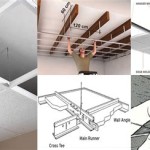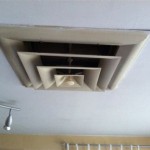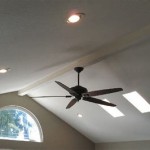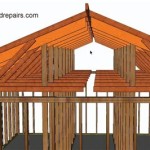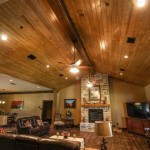What Is The Best Size Ceiling Fan For A Living Room?
Selecting the appropriate size ceiling fan for a living room significantly impacts its cooling efficiency, aesthetic appeal, and overall comfort. A fan that is too small will not effectively circulate air, leaving areas of the room stagnant and stuffy. Conversely, a fan that is too large can be overpowering, create unwanted drafts, and detract from the room's aesthetic. Determining the ideal ceiling fan size requires careful consideration of the room's dimensions, including square footage and ceiling height.
Several factors contribute to the optimal size selection. Ignoring these factors can lead to purchasing a fan that doesn't adequately meet the needs of the space. This article aims to provide a comprehensive guide for choosing the right ceiling fan size for a living room, focusing on key considerations and practical recommendations.
Understanding Room Dimensions and Fan Size
The primary determinant of the appropriate ceiling fan size is the square footage of the living room. This measurement is calculated by multiplying the room's length by its width. A larger room requires a larger fan to effectively circulate air throughout the space. Fan sizes are typically categorized by their blade span, which is the diameter of the circle the blades create when rotating. Common blade span sizes range from 30 inches to over 70 inches.
For rooms up to 75 square feet, a ceiling fan with a blade span of 36 inches or less is generally sufficient. Rooms ranging from 76 to 144 square feet benefit from a fan with a blade span of 42 inches. For living rooms measuring between 144 and 225 square feet, a 52-inch blade span is often recommended. Larger rooms, exceeding 225 square feet, typically require a fan with a 56-inch blade span or larger, or potentially multiple fans to ensure adequate air circulation.
These are general guidelines, and adjustments may be necessary based on other factors, such as the room's shape and the presence of obstructions. For instance, a long, narrow room may benefit from two smaller fans strategically placed to maximize airflow, rather than a single large fan in the center. In addition to square footage, ceiling height plays a crucial role in determining the appropriate downrod length. A downrod is the metal pipe that extends from the ceiling to the fan motor housing.
Ceiling height impacts the fan's effectiveness and safety. In rooms with standard 8-foot ceilings, a flush-mount or hugger-style fan, which sits close to the ceiling, is often the best choice. For ceilings between 9 and 10 feet, a short downrod of approximately 6 to 12 inches is recommended to bring the fan down to a more effective height. High ceilings, exceeding 10 feet, require longer downrods of 18 inches or more to ensure the fan is positioned at an optimal distance from the floor, typically between 8 and 9 feet.
Proper downrod length ensures the fan operates safely and efficiently. A fan mounted too close to the ceiling may not circulate air effectively, while a fan mounted too low poses a safety hazard. Calculating the correct downrod length involves subtracting the desired distance from the floor (8-9 feet) from the ceiling height. This calculation provides the ideal downrod length to achieve the desired fan height.
Considering Ceiling Height and Downrod Length
As previously mentioned, ceiling height is a critical factor in selecting the appropriate ceiling fan size and downrod length. Standard ceiling heights, typically around 8 feet, necessitate the use of flush-mount or hugger-style fans. These fans are designed to minimize the distance between the blades and the ceiling, ensuring adequate airflow without compromising headroom. Flush-mount fans are ideal for low ceilings because they sit directly against the ceiling, maximizing vertical space.
For ceilings between 9 and 10 feet, a short downrod of 6 to 12 inches is recommended. This length allows the fan to circulate air more effectively without being positioned too low. The downrod should be selected based on the specific ceiling height to maintain the optimal distance between the fan blades and the floor. Using a downrod that is too short can reduce the fan's effectiveness, while a downrod that is too long can create a safety hazard.
High ceilings, exceeding 10 feet, require longer downrods to bring the fan down to a more effective height. A downrod of 18 inches or more is typically necessary for high ceilings. The appropriate downrod length depends on the ceiling height and the desired distance between the fan blades and the floor. It is crucial to consult the fan manufacturer's recommendations for downrod lengths based on ceiling height.
In addition to downrod length, the type of ceiling also impacts the installation process. Sloped ceilings require specialized downrods and mounting hardware to ensure the fan hangs level and operates safely. Angled ceiling adapters are designed to accommodate sloped ceilings, allowing the fan to hang perpendicular to the floor. It is important to verify the fan's compatibility with sloped ceilings before purchasing and installing.
Furthermore, structural considerations, such as the presence of ceiling beams or obstructions, can influence the placement and size of the ceiling fan. If the ceiling is obstructed by beams or other architectural features, it may be necessary to adjust the fan's position or choose a smaller fan size to ensure proper clearance. Careful planning and measurement are essential to avoid installation issues and ensure optimal fan performance.
Additional Factors Influencing Fan Size Selection
Beyond room dimensions and ceiling height, several additional factors can influence the ideal ceiling fan size for a living room. These factors include the room's layout, the presence of furniture, the number of windows and doors, and the desired aesthetic. Understanding these factors can help refine the selection process and ensure the chosen fan meets the specific needs of the space.
The room's layout significantly impacts air circulation patterns. Open-concept living rooms, which flow seamlessly into other spaces, may require larger fans or multiple fans to effectively cool the entire area. In contrast, smaller, more enclosed living rooms may only require a single, smaller fan. The placement of furniture can also affect airflow, potentially necessitating adjustments to the fan's position or size to ensure unobstructed circulation.
The number and size of windows and doors can also influence the room's temperature and ventilation. Rooms with large windows that receive direct sunlight may require a more powerful fan to counteract the heat gain. Similarly, rooms with frequent drafts due to open doors may benefit from a fan with a higher airflow capacity to maintain a comfortable temperature. The fan's airflow, measured in cubic feet per minute (CFM), indicates its ability to circulate air. Higher CFM ratings indicate greater airflow.
The desired aesthetic is another important consideration. Ceiling fans come in a wide variety of styles, finishes, and designs. The chosen fan should complement the room's décor and enhance its overall aesthetic appeal. While functionality is paramount, the fan's appearance should also be taken into account. Selecting a fan that aligns with the room's style can contribute to a more cohesive and visually appealing space.
Energy efficiency is another critical factor to consider. Modern ceiling fans are designed to be energy-efficient, consuming minimal electricity while providing effective cooling. Look for fans with the Energy Star label, which indicates they meet strict energy efficiency standards. Energy-efficient fans can help reduce energy consumption and lower utility bills.
Finally, consider the noise level of the fan. Some fans are quieter than others, and noise can be a significant factor, particularly in living rooms where quiet relaxation is desired. Look for fans with quiet motors and well-balanced blades to minimize noise. Reading online reviews and consulting with sales professionals can provide valuable insights into the fan's noise level and overall performance.

Ceiling Fan Size Guide Delmarfans Com

Ceiling Fan Size Guide Delmarfans Com

How To Select The Right Size For Every Room

How To Buy A Ceiling Fan Four Step Guide Lamps Plus

How To Choose The Best Ceiling Fan

Ceiling Fan Size Guide Delmarfans Com

Best Size Ceiling Fan For Your Great Rooms Hunter

Best Ceiling Fans For Your Home The Depot

Best Ceiling Fans For Your Home The Depot

Ceiling Fan Size Guide Delmarfans Com
Related Posts

